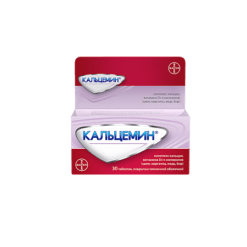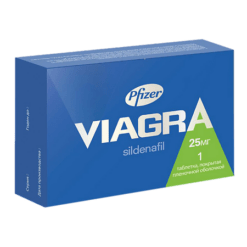-
×


-
×


-
×


-
×


Subtotal: €45.82








Subtotal: €45.82








Subtotal: €45.82
€1.00
Out of stock
(E-mail when Stock is available)
ATC: L.01.X.E.01 Imatinib
Pharmacodynamics:
Proteintyrosine kinase inhibitor. Inhibits the enzyme Bcr-Abl-tyrosine kinase at the cellular level, in vitro and in vivo. It selectively suppresses proliferation and causes apoptosis of Bcr-Abl positive cell lines as well as young leukemia cells in Philadelphia chromosome positive chronic myeloleukemia and in acute lymphoblastic leukemia.
In colony transformation studies performed on peripheral blood and bone marrow samples, imatinib was shown to selectively inhibit Bcr-Abl-positive colonies obtained from chronic myeloleukemia patients.
In in vivo studies in animal models using Bcr-Abl-positive tumor cells, imatinib was shown to have antitumor activity with monotherapy.
In addition, imatinib is a tyrosine kinase receptor inhibitor for platelet-derived growth factor and stem cell factor and inhibits cellular responses mediated by these factors.
In vitro imatinib inhibits proliferation and induces apoptosis of GI stromal tumor cells expressing kit mutations.
Pharmacokinetics
– First identified Philadelphia chromosome positive (Ph+) chronic myeloid leukemia (XML) in children and adult patients;
– Ph+ XML in the chronic phase with failure of previous interferon alpha therapy or in the acceleration phase, or blast crisis in children and adult patients;
– Newly diagnosed Philadelphia chromosome positive (Ph+) acute lymphoblastic leukemia (ALL) in adult patients in combination with chemotherapy;
– Relapsed or refractory Ph+ ALL in adult patients as monotherapy;
– Myelodysplastic/myeloproliferative diseases (MDS/MPD), associated with gene rearrangements of the platelet growth factor receptor, in adult patients;
– Systemic mastocytosis (SM) in adult patients with no D816V c-Kit mutation or with unknown c-Kit mutation status;
– Hypereosinophilic syndrome and/or chronic eosinophilic leukemia (HES/CEL) in adult patients with positive or negative abnormal FIP1L1-PDGFR alpha-tyrosine kinase;
– Inoperable, recurrent and/or metastatic dermatofibrosarcoma protuberans in adult patients.
Pharmacotherapeutic group: antitumor agent, protein tyrosine kinase inhibitor
ATX: L.01.X.E.01 Imatinib
Pharmacodynamics:
Protein tyrosine kinase inhibitor. Inhibits the enzyme Bcr-Abl-tyrosine kinase at the cellular level, in vitro and in vivo. Selectively suppresses the proliferation and causes apoptosis of cell lines positive for Bcr-Abl, as well as young leukemic cells in chronic myeloid leukemia with a positive Philadelphia chromosome and in acute lymphoblastic leukemia.
In colony transformation studies performed on peripheral blood and bone marrow samples, imatinib was shown to selectively inhibit Bcr-Abl-positive colonies obtained from patients with chronic myeloid leukemia.
Imatinib has been shown to have antitumor activity when administered as monotherapy in in vivo animal models using Bcr-Abl-positive tumor cells.
In addition, imatinib is an inhibitor of tyrosine kinase receptors for platelet-derived growth factor and stem cell factor, and also suppresses cellular responses mediated by the above factors.
In vitro, imatinib inhibits proliferation and induces apoptosis of gastrointestinal stromal tumor cells expressing kit mutations.
Pharmacokinetics
Treatment with imatinib should only be carried out under the supervision of a physician experienced in working with anticancer drugs.
Cases of severe fluid retention have been reported when using imatinib; regular monitoring of body weight is recommended. If unexpected rapid weight gain occurs, an evaluation should be performed and, if necessary, imatinib therapy should be temporarily discontinued and/or diuretics should be initiated.
When using imatinib, the development of neutropenia or thrombocytopenia was observed; These events had a clear relationship with the stage of the disease, and their incidence was higher in patients with CML in the blast crisis or accelerated phase compared with patients with CML in the chronic phase. It may be necessary to temporarily interrupt therapy or reduce the dose of imatinib.
When using imatinib, it is recommended to regularly conduct clinical blood tests and monitor liver function (transaminases, bilirubin, alkaline phosphatase). When used in patients with liver disease, a clinical blood test should be performed regularly and the activity of liver enzymes should be determined.
Imatinib and its metabolites are excreted by the kidneys to a small extent. Creatinine clearance decreases with age, and age does not have a significant effect on the pharmacokinetic parameters of imatinib. There was no correlation between imatinib exposure and the degree of renal impairment in patients with mild (creatinine clearance 40-59 ml/min) to severe (creatinine clearance <20 ml/min) renal impairment. However, if patients in this category are intolerant, the initial dose of imatinib should be reduced.
There are reports of the development of hypothyroidism during the use of imatinib in patients who have undergone thyroidectomy and are receiving replacement therapy with levothyroxine sodium. The concentration of thyroid-stimulating hormone in this category of patients should be regularly determined.
Careful monitoring of patients with cardiovascular diseases, risk factors for heart failure, and patients with a history of renal failure should be ensured. If signs or symptoms suggestive of these conditions are identified, the patient should be assessed and appropriate treatment initiated.
In patients with myelodysplastic/myeloproliferative diseases and high eosinophil counts, ECG and serum cardiac-specific troponin concentrations should be determined. If abnormalities are detected at the beginning of therapy, the possibility of prophylactic use of systemic corticosteroids for 1-2 weeks simultaneously with imatinib should be considered.
There are isolated case reports of gastric antrum vascular ectasia (GAVE syndrome), a rare cause of gastrointestinal bleeding, in patients with CML and ALL and other diseases.
It is necessary to monitor the gastrointestinal tract in patients with metastatic malignant GISTs (abdominal pain, gastrointestinal bleeding, constipation, etc.) at the beginning and throughout imatinib therapy. If necessary, consider discontinuing imatinib therapy.
Due to the risk of developing tumor lysis syndrome, clinically significant dehydration and increased uric acid concentrations should be corrected if necessary before using imatinib.
In patients who are carriers of the hepatitis B virus, reactivation of this virus is possible after treatment with BCR-ABL tyrosine kinase inhibitor drugs, such as imatinib. In some cases, when using drugs of this class, the development of acute liver failure or fulminant hepatitis has been observed, leading to liver transplantation or death.
Before initiating imatinib therapy, all patients should be screened for the presence of hepatitis B virus. Patients who are carriers of hepatitis B virus and who require imatinib treatment should be closely monitored for the development of signs and symptoms of active infection both during imatinib therapy and for several months thereafter.
Impact on the ability to drive vehicles and operate machinery
Some side effects, such as dizziness and blurred vision, may adversely affect the ability to drive vehicles and perform other potentially hazardous activities that require increased concentration and psychomotor speed. In this regard, patients who experience the described adverse events should refrain from performing these types of activities.
Imatinib
Active substance:
Imatinib mesylate – 119.50 mg in terms of imatinib base 100.00 mg,
Excipients:
Microcrystalline cellulose 91.00 mg
Crospovidone 15.00 mg
Colloidal silicon dioxide (Aerosil) 2.00 mg
Magnesium stearate 1.5 mg
Capsule shell:
Hard gelatin capsule No. 3:
[body: titanium dioxide -2%, gelatin – up to 100%; 48.00 mg cap: azorubine dye (E122) – 0.0328%, sunset yellow dye (E110) – 0.219%, titanium dioxide -2%, gelatin – up to 100%] [body: titanium dioxide – 1%, iron dye No. 1, yellow oxide – 0.5%, gelatin – up to 100%; 75.00 mg cap: titanium dioxide – 1%, iron dye yellow oxide – 0.5%, gelatin – up to 100%].There are currently no data on the use of imatinib in pregnant women. Animal studies have shown reproductive toxicity, but the potential risk to the fetus is unknown. The use of imatinib is contraindicated during pregnancy. Women of childbearing potential should use effective contraception during imatinib therapy and for at least 3 months after treatment.
It is currently unknown whether imatinib is excreted into breast milk in nursing women. Animal studies have shown that the unchanged drug and/or its metabolites are excreted in milk in significant quantities. Women taking imatinib should not breastfeed.
Hypersensitivity to the active substance or any other component of the drug, pregnancy, breastfeeding, children under 2 years of age (safety and effectiveness have not yet been established).
With caution:
Imatinib should be prescribed with caution to patients with severe hepatic impairment, severe renal impairment, or cardiovascular disease.
diseases and/or in the presence of risk factors for the development of heart failure, as well as during regular hemodialysis procedures.
Infectious and parasitic diseases: uncommon – herpes zoster, herpes simplex, nasopharyngitis, pneumonia, sinusitis, inflammation of the subcutaneous tissue, upper respiratory tract infections, influenza, urinary tract infections, gastroenteritis, sepsis; rarely – mycosis.
From the hematopoietic system: very often – neutropenia, thrombocytopenia, anemia; often – pancytopenia, febrile neutropenia; uncommon – thrombocythemia, lymphopenia, suppression of bone marrow hematopoiesis, eosinophilia, lymphadenopathy; rarely – hemolytic anemia
Metabolism: very often – weight gain; often – anorexia, weight loss; uncommon – hypokalemia, increased appetite, hypophosphatemia, decreased appetite, dehydration, hyperuricemia, gout, hypercalcemia, hyperglycemia, hyponatremia; rarely – hyperkalemia, hypomagnesemia.
From the mental side: often – insomnia; infrequently – depression, decreased libido, anxiety; rarely – confusion.
From the nervous system: very often – headache; often – dizziness, paresthesia, taste disturbance, hypoesthesia; uncommon – migraine, somnolence, fainting, peripheral neuropathy, memory impairment, sciatica, restless legs syndrome, tremor, hemorrhagic stroke; rarely – increased intracranial pressure, convulsions, optic neuritis.
From the organ of vision: often – swelling of the eyelids, increased lacrimation, conjunctival hemorrhages, conjunctivitis, dry eye syndrome, blurred vision; uncommon – eye irritation, eye pain, orbital edema, scleral hemorrhage, retinal hemorrhage, blepharitis, macular edema; rarely – cataracts, papilledema, glaucoma.
Auditory and vestibular disorders: uncommon – vertigo, tinnitus, hearing loss.
From the cardiovascular system: often – hot flashes, hemorrhages; uncommon – palpitations, tachycardia, chronic heart failure, pulmonary edema, increased or decreased blood pressure, hematoma, subdural hematoma, cold extremities, Raynaud’s syndrome; rarely – arrhythmia, atrial fibrillation, cardiac arrest, myocardial infarction, angina pectoris, pericardial effusion.
From the respiratory system: often – nosebleeds, shortness of breath, cough; uncommon – pleural effusion, pain in the pharynx or larynx, pharyngitis; rarely – pleural pain, pulmonary fibrosis, pulmonary hypertension, pulmonary hemorrhage.
From the digestive system: very often – nausea, vomiting, diarrhea, dyspepsia, abdominal pain; often – bloating, flatulence, constipation, gastroesophageal reflux, dry mouth, gastritis; uncommon – stomatitis, ulceration of the oral mucosa, gastrointestinal bleeding, belching, melena, esophagitis, ascites, gastric ulcer, vomiting blood, cheilitis, dysphagia, pancreatitis; rarely – colitis, paralytic/obstructive intestinal obstruction, inflammation of the colon.
From the liver and biliary tract: often – increased activity of liver transaminases; uncommon – jaundice, hepatitis, hyperbilirubinemia; rarely – liver failure, liver necrosis.
From the skin and subcutaneous tissues: very often – periorbital edema, dermatitis, eczema, skin rash; often – itching, swelling of the face, dry skin, erythema, alopecia, night sweats, photosensitivity reactions; uncommon – pustular rash, petechiae, increased sweating, urticaria, ecchymosis, predisposition to hematoma formation, hypotrichosis, hyperpigmentation/hypopigmentation of the skin, exfoliative dermatitis, nail damage, folliculitis, petechiae, psoriasis, purpura, bullous rash; rarely – acute febrile neutrophilic dermatosis (Sweet’s syndrome), discoloration of nails, angioedema, vesicular rash, erythema multiforme, leukoplastic vasculitis, Stevens-Johnson syndrome, acute generalized pustular exanthema.
From the musculoskeletal system: very often – muscle spasms and cramps, musculoskeletal pain, including myalgia and arthralgia, bone pain; often – swelling of the joints; infrequently – stiffness of muscles and joints; rarely – muscle weakness, arthritis.
From the urinary system: uncommon – kidney pain, hematuria, acute renal failure, frequent urination.
From the reproductive system: uncommon – gynecomastia, erectile dysfunction, menorrhagia, menstrual irregularities, sexual dysfunction, nipple pain, breast enlargement, scrotal swelling.
From the body as a whole: very often – fluid retention, swelling, increased fatigue; often – weakness, fever, anasarca, chills, trembling; uncommon – chest pain, general malaise.
From laboratory parameters: infrequently – increased concentration of creatinine in the blood, increased activity of CPK in the blood, increased activity of alkaline phosphatase, LDH; rarely – increased amylase activity in blood plasma.
When imanitib is used simultaneously with drugs that inhibit the cytochrome P450 isoenzyme CYP3A4, for example, viral protease inhibitors (indinavir, lopinavir, ritonavir, saquinavir, telaprevir, nelfinavir, boceprevir), azole antifungals (including ketoconazole, itraconazole, posaconazole, voriconazole), some macrolide antibiotics (erythromycin, clarithromycin, telithromycin), the metabolism of imatinib may slow down and its concentration in the blood plasma may increase. Caution is required when using imatinib concomitantly with drugs that are inhibitors of CYP3A4 isoenzymes.
The simultaneous use of drugs that are inducers of the CYP3A4 isoenzyme (for example, rifampicin, dexamethasone, St. John’s wort preparations, antiepileptic drugs: carbamazepine, oxcarbazepine, phenytoin, primidone) can lead to increased metabolism of imatinib and, as a result, a decrease in its concentration in the blood plasma and ineffectiveness of therapy. The simultaneous use of imatinib and strong inducers of the CYP3A4 isoenzyme should be avoided.
With simultaneous use of imatinib and simvastatin, there is an increase in Cmax and AUC of simvastatin by 2 and 3.5 times, respectively, which is a consequence of inhibition of CYP3A4 by imatinib. Caution is recommended when simultaneous use of imatinib and drugs that are CYP3A4 substrates and have a narrow therapeutic concentration range (for example, cyclosporine, pimozide, tacrolimus, sirolimus, ergotamine, fentanyl, terfenadine, bortezomib, docetaxel, quinidine). Imatinib may increase the serum concentrations of other drugs metabolized by the CYP3A4 isoenzyme (triazolobenzodopazepines, dihydropyridine, slow calcium channel blockers, most HMG-CoA reductase inhibitors, including statins).
Imatinib also inhibits CYP2C9 and CYP2C19 in vitro. When used simultaneously with warfarin, an increase in prothrombin time was observed. When used simultaneously with coumarin derivatives, short-term monitoring of prothrombin time is necessary at the beginning and end of therapy, as well as when changing the dosage regimen. Low molecular weight heparins should be considered as an alternative to warfarin.
The issue of drug interactions between imatinib and chemotherapy drugs in patients with Ph+ ALL has not been sufficiently studied. Caution must be exercised when using imatinib and chemotherapy drugs simultaneously due to a possible increase in the risk of drug complications, such as hepatotoxicity, myelosuppression and others.
When imatinib is combined with chemotherapy drugs in high doses, transient liver toxicity may develop in the form of an increase in the activity of liver transaminases and hyperbilirubinemia. Monitoring of liver function should be considered when imatinib is combined with chemotherapy regimens that have the potential to cause liver dysfunction.
In vitro, imatinib inhibits the cytochrome P450 isoenzyme CYP2D6 at the same concentrations at which it inhibits the CYP3A4 isoenzyme.
In patients after thyroidectomy receiving hormone replacement therapy with levothyroxine sodium, its concentration may be reduced when used simultaneously with imatinib.
There have been reports of the development of liver damage with simultaneous use of imatinib and asparaginase.
Cases of fatal liver failure have been reported when imatinib was taken concomitantly with paracetamol.
There are reports of isolated cases of imatinib overdose.
Overdose in adults
In one case, when taking imatinib at a dose of 1200-1600 mg for 1-10 days, patients experienced: nausea, vomiting, diarrhea, rash, erythema, edema, facial swelling, fatigue, muscle spasms, thrombocytopenia, pancytopenia, abdominal pain, headache, decreased appetite.
When taking the drug at a dose of 1800-3200 mg, weakness, myalgia, increased blood creatine phosphokinase activity, bilirubin concentration, and gastrointestinal pain were noted.
When using the drug at a dose of 6400 mg once (information from a published source), the patient developed nausea, vomiting, abdominal pain, hyperthermia, facial swelling, a decrease in the number of platelets and an increase in the activity of liver transaminases. When taking the drug in a dose of 8-10 g, vomiting and gastrointestinal pain were noted once.
Overdose in children and adolescents
When taking the drug at a dose of 400 mg once, children aged 3 years experienced vomiting, anorexia, diarrhea, and at a dose of 980 mg – a decrease in the number of leukocytes and diarrhea. Treatment: medical observation and symptomatic therapy are recommended. There is no known antidote for imatinib.
In a place protected from light at a temperature not exceeding 25 ° C. Keep out of the reach of children.
2 years.
Do not use after expiration date.
Drug technology, Russia
| Shelf life | 2 years. Do not use after the expiration date. |
|---|---|
| Conditions of storage | Store in a dark place at a temperature not exceeding 25 °С. Keep out of reach of children. |
| Manufacturer | Drug Technology, Russia |
| Medication form | capsules |
| Brand | Drug Technology |
Buy Imatinib-TL, 100 mg capsules 120 pcs with delivery to USA, UK, Europe and over 120 other countries.